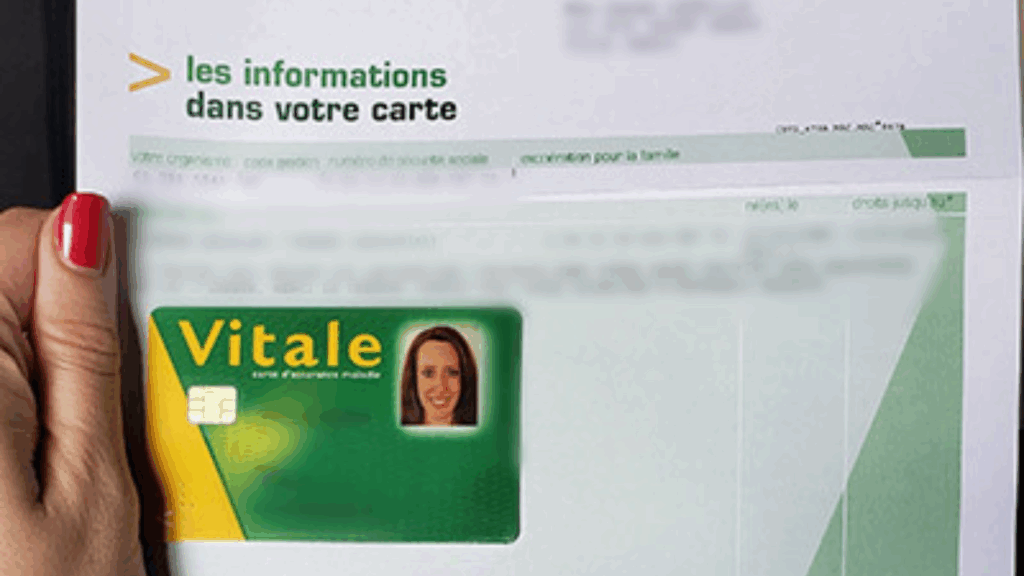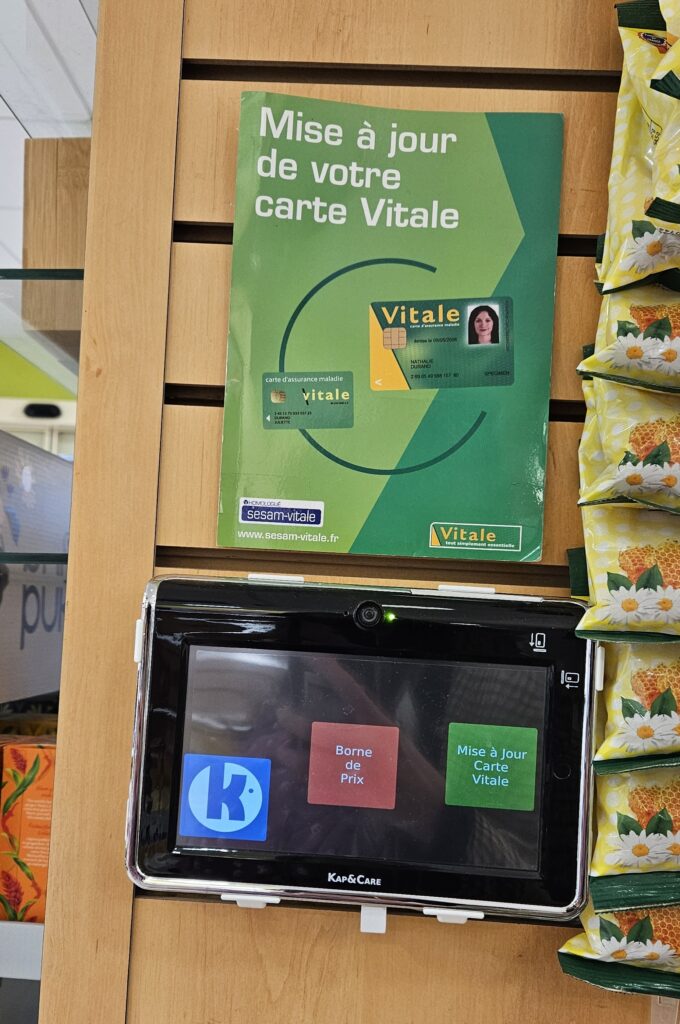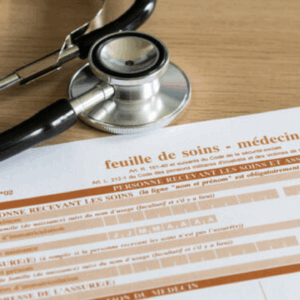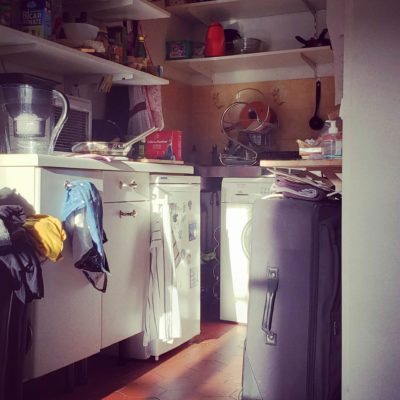Everything You Need to Know How to Understand Your Carte Vitale in France

This post is part of my Healthcare in France for Expats series. If you found it helpful, check out my other articles and more to make navigating the system a little easier. Check back often—I’m adding new guides regularly to make French healthcare a little less confusing!
If you’re living in France, the carte vitale is your key to the healthcare system. Think of it as France’s electronic health insurance card: it stores your social security information and allows doctors, pharmacists, and hospitals to bill Assurance Maladie directly. Without it, getting reimbursed for medical expenses can be slow and confusing.
For foreigners living in France, understanding how the carte vitale works is especially important. It’s not just a piece of plastic, it ensures you get the correct reimbursements for doctor visits, prescriptions, and specialist consultations, while simplifying administrative tasks. Using it correctly can save you time, reduce paperwork, and prevent costly mistakes when navigating a new system.
When I first received my carte vitale, I’ll admit I did a little happy dance. I finally had the key that would unlock a plethora of visits and benefits. I had been waiting till I had my card to make a flurry of appointments, trying to keep up with some health issues. My first doctor visit was a mix of excitement and confusion, would it work? Would I be reimbursed? In what time frame? I quickly learned that presenting it correctly, keeping my information updated, and understanding how it interfaces with my mutuelle made a huge difference. My carte vitale has been my most used piece of plastic next to my bank card. It became super helpful and I was ever so grateful when I was pregnant.
Table of Contents
What exactly is the Carte Vitale?
The carte vitale is your personal key to the French public healthcare system, it is your proof that you’re covered under sécurité sociale. It’s a small green smart card with your name, photo, and a chip that securely stores your social security and health insurance information. Every resident who’s registered with l’Assurance Maladie (France’s national health insurance provider) receives one.
The card is issued by l’Assurance Maladie, which manages most people’s public health coverage in France. Once you’re officially registered and have a permanent social security number, you’ll be invited to apply for your card, either by post or online through your ameli.fr account.
This card had three important purposes:
Stores personal information: Your full name, date of birth, and social security number are encoded on the chip. This ensures that the healthcare system can identify you and your type of coverage quickly.
Facilitates direct billing: When you visit a doctor, pharmacy, or hospital, the provider can electronically submit claims to Assurance Maladie. This reduces paperwork, speeds up reimbursements, and often means you only pay a small portion (ticket modérateur) upfront.
Tracks reimbursements and medical history: Over time, your carte vitale also helps maintain a record of your visits and reimbursements, which can be useful for tax deductions, insurance claims, or when seeing new doctors.
You’ll use your carte vitale every time you visit a doctor, pharmacy, or hospital. Instead of filling out paper forms (like the feuille de soins), the healthcare provider simply inserts your card into their reader. This automatically sends your visit details to Assurance Maladie through a system called télétransmission, ensuring your reimbursements are processed quickly and directly to your bank account.
For anyone new to France, the carte vitale may feel very different from health insurance cards in other countries.
In the United States, insurance cards are typically issued by private companies. Patients often pay upfront and submit claims themselves for reimbursement. Coverage and costs vary depending on the plan, and there’s usually no direct link to the provider’s billing system.
In the United Kingdom, the NHS card is primarily an ID, not used for billing. Most services are free at the point of care, so there’s no reimbursement system to track.
The carte vitale is both an ID and a reimbursement tool, directly connected to the public health system. It simplifies administrative procedures and ensures you are reimbursed automatically for eligible services.
It’s important to note that the Carte Vitale isn’t a payment card. You’ll still need to pay upfront for most medical visits. Instead, it’s your proof of coverage under the French healthcare system, allowing you to get reimbursed without the paperwork or long delays.
Who can get a Carte Vitale
Before you can get your carte vitale, you’ll first need to have a French social security number, that’s your gateway into the healthcare system. If you haven’t applied for one yet, I recommend checking out my post on how to apply for Sécurité Sociale in France. It walks you through everything you need to know to get started, because without that number, you won’t be able to request your carte vitale.
Once you’re registered with Sécurité Sociale, you’ll fall into one of several categories depending on your situation:
Employees and Self-Employed Workers
If you’re working in France, whether as an employee or freelancer, you’re typically enrolled in the French health system automatically. Your contributions to Sécurité Sociale are deducted directly from your salary or paid through URSSAF if you’re self-employed. Once your registration is confirmed and you have your social security number, you can apply for your carte vitale through l’Assurance Maladie.
Students
International students studying in France are also eligible for coverage. When you register at your university, you’ll either be automatically enrolled in Sécurité Sociale or asked to sign up through etudiant-etranger.ameli.fr. After that, you can request your carte vitale to make reimbursements simple and automatic.
Job Seekers
If you’re unemployed but living in France, you’re still eligible for coverage under PUMA or through Pôle Emploi if you’re registered as a job seeker. Once affiliated, you can apply for your carte vitale just like anyone else.
Retirees
Retired residents in France, whether they’ve worked here or moved from abroad, can usually access healthcare coverage through Sécurité Sociale. You’ll apply for your carte vitale through l’Assurance Maladie, often using pension or residency documents to confirm your eligibility.
Dependents (Spouses and Children)
If you’re covered as a dependent, for example, a spouse or child on someone else’s insurance, you can still get your own carte vitale once you’re registered as an ayant droit (beneficiary). Children typically receive their own card starting at age 16.
How to Apply for Your Carte Vitale
Once you’ve got your permanent French social security number, you’re ready to apply for your carte vitale. Don’t worry, it’s a pretty straightforward process once you know what to expect.
Step 1: Wait for Your Invitation
After your sécurité sociale application is processed, you’ll usually receive a letter or email from l’Assurance Maladie inviting you to apply for your carte vitale. This notice will include instructions on how to upload your documents online or return them by post. Sometimes, you can apply even without the invitation by logging into your Ameli.fr account, the official portal for all things health insurance in France, and following the instructions through your account.
Step 2: Apply Online (or by Mail)
The easiest way to apply is online through your Ameli account. You’ll be asked to upload:
A recent passport-style photo
A valid form of ID (passport or residence permit)
Your signature (often digital if you apply online)
If you prefer to do things the old-fashioned way or haven’t set up your Ameli account yet, you can also send these documents by mail using the form included in your invitation letter.
Step 3: Wait for Processing
Once you’ve submitted your information, Assurance Maladie will process your application and create your card. This can take anywhere from a few weeks to a couple of months, depending on your local office (CPAM). You’ll receive your card by post once it’s ready, it looks like a small green credit card with your name, photo, and a gold chip.
Step 4: Activate and Keep It Up to Date
Once you receive your carte vitale, it’s ready to use right away. All you need to do is simply bring it with you to all medical appointments and pharmacies. However, it’s important to update it at least once a year, or whenever your personal situation changes (new address, mutuelle, doctor, etc.). You can do this easily at a pharmacy using the borne vitale (a green self-service terminal) or it will be done automatically with the pharmacists.

Documents You’ll Need to Apply for Your Carte Vitale
Before you start your application, it’s a good idea to gather everything you’ll need. While the exact documents can vary slightly depending on your situation, here’s a general list of what’s typically required when applying for your carte vitale:
1. Proof of Identity
You’ll need a valid passport or titre de séjour (residency permit) to confirm who you are. If you’re applying as a dependent or under a spouse’s coverage, you may also need to provide their ID.
2. Proof of Address
Bring something recent, usually dated within the last three months, such as a utility bill, rental agreement, or attestation d’hébergement (if you’re living with someone and they provide a signed housing statement along with a copy of their ID).
3. Passport-Style Photo
You’ll need a recent, clear passport photo for your card. If you’re applying online, you can usually upload a digital photo directly. If you’re applying by mail, you’ll attach a physical photo to the form.
4. Proof of Affiliation to Sécurité Sociale
This is typically an attestation de droits, a document confirming your registration with l’Assurance Maladie. You can download it from your Ameli.fr account once you’re officially affiliated.
5. Additional Documents (If Applicable)
Depending on your status, you may also need to include:
Marriage or birth certificate (if applying as a dependent spouse or for a child)
Proof of employment (for salaried workers)
Student enrollment certificate (for students)
Pôle Emploi registration (for job seekers)
How the Carte Vitale works
Once your carte vitale arrives, you’re officially part of France’s healthcare system, congratulations! But how exactly does it work? In short, it’s the tool that makes getting reimbursed for medical expenses fast, simple, and (almost) automatic.
At the Doctor’s Office
When you visit a doctor, pharmacy, or hospital, you’ll hand over your carte vitale at the end of your appointment. The provider inserts it into a special card reader, which securely sends all the details of your visit, your treatment, the fee, and your doctor’s information, directly to l’Assurance Maladie.
This digital process is called télétransmission, and it’s what allows your reimbursement to go straight into your bank account. No paperwork, no waiting in line at the post office, and no feuille de soins (unless something goes wrong with the card).
Reimbursement in Action
After your appointment, you’ll usually receive your refund automatically within about 5 to 7 business days, depending on your doctor and bank. If you’ve already linked your mutuelle (top-up insurance) to your carte vitale, the rest of your costs are often covered automatically, too, meaning you might not need to pay much, if anything, out of pocket.
It is not a Payment Card
It’s worth noting that the carte vitale isn’t a payment card. It doesn’t pay your doctor or pharmacist directly. You’ll still pay upfront for most visits (unless your doctor offers tiers payant, which means no advance payment). Instead, your card simply proves that you’re covered by Sécurité Sociale and ensures that your reimbursement gets processed quickly.
At Pharmacies and Labs
You’ll also use your carte vitale to pick up prescriptions or have lab work done. Most pharmacies are fully connected to télétransmission, so your reimbursements work the same way as at the doctor’s office.
What to Do If You Don’t Have a Carte Vitale Yet
If you’re new to France, waiting for your social security number, or simply haven’t received your carte vitale yet, don’t panic — you can still get reimbursed for medical care. The system has a workaround called the feuille de soins, which acts as your backup plan.
Using a Feuille de Soins
When you visit a doctor, dentist, or pharmacy without a carte vitale, ask them for a feuille de soins. You’ll fill in your personal information, including your temporary social security number if you have one, and then mail it to your local CPAM office. Once processed, you’ll receive your reimbursement directly to your bank account.
Tips While Waiting
Keep your documents handy: Photo ID, proof of address, and any temporary social security paperwork.
Scan or copy the feuille de soins before sending it just in case it gets lost.
Stay in touch with Ameli as your account can show you when your reimbursements are processed.
Mutuelle coverage: If you already have a supplementary health insurance plan, you may need to submit a copy of your feuille de soins to your mutuelle for top-up reimbursement.
Reimbursement using a feuille de soins is slower than using a carte vitale. Expect a few weeks to a couple of months, depending on the office and your documents. That’s why getting your Carte Vitale as soon as possible is worth it — it makes life much easier!

You May Also Like

Feuille de Soins in France: What It Is and How to Use It
12 September 2025
French Healthcare 101: Understanding Your Rights as an Immigrant
23 September 2025